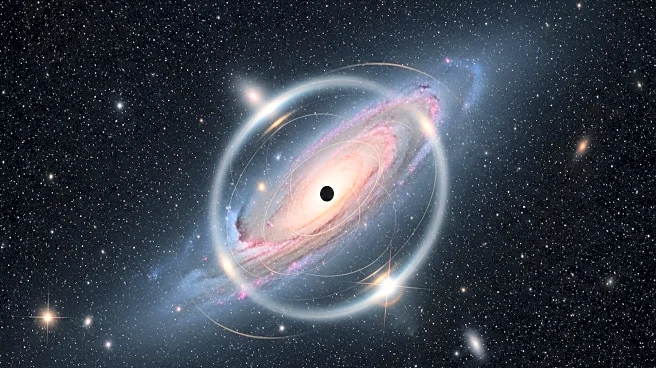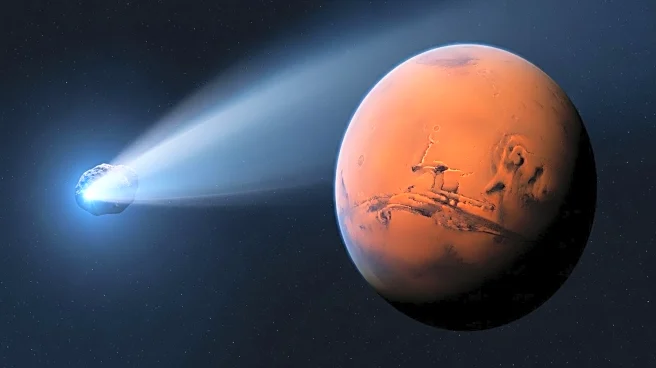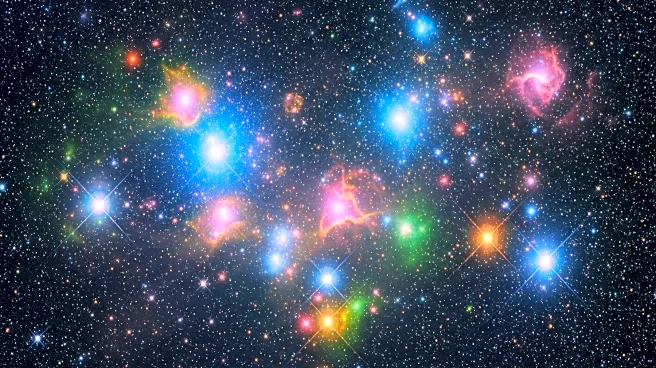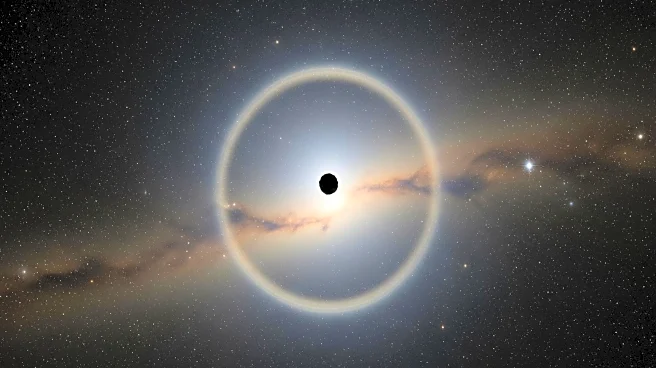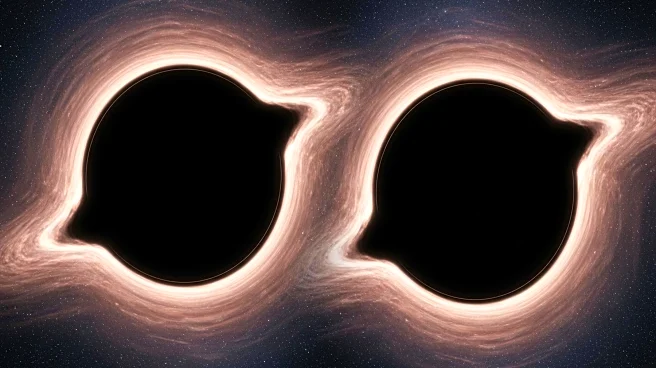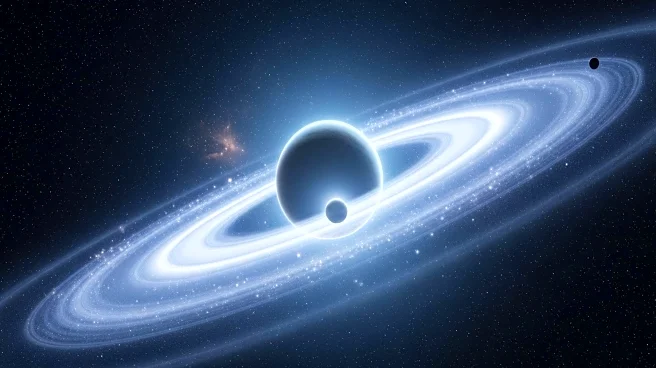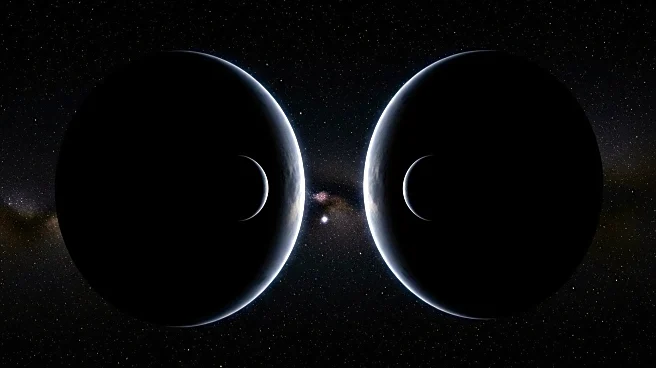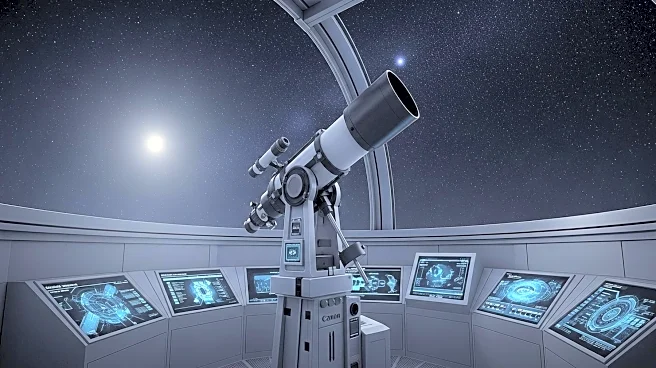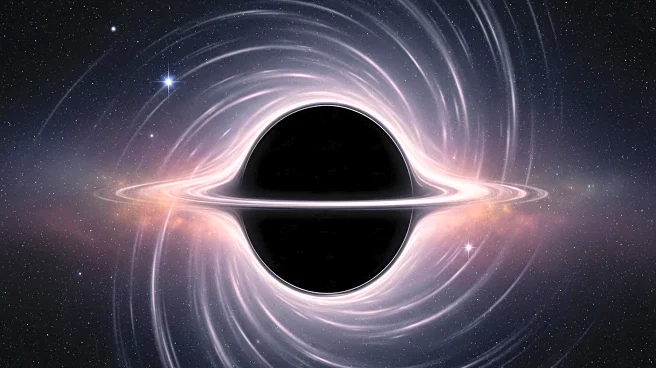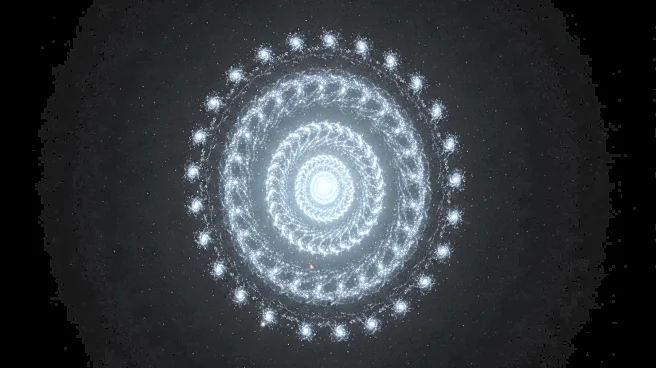What is the story about?
What's Happening?
Astronomers have detected the lowest mass dark object ever measured using gravitational lensing, a technique that observes the distortion of light from distant galaxies caused by the gravity of dark objects. The object, with a mass a million times greater than the sun, is located approximately 10 billion light years from Earth. This discovery was made using a network of telescopes, including the Green Bank Telescope and the Very Long Baseline Array, forming an Earth-sized super-telescope. The research, published in Nature Astronomy, marks a significant advancement in understanding dark matter, which is essential for comprehending the evolution of stars and galaxies.
Why It's Important?
This discovery is crucial for the field of astronomy as it provides insights into the nature of dark matter, a fundamental component of the universe that does not emit light and is challenging to detect. Understanding whether dark matter is smooth or clumpy can reveal its composition and influence on galaxy formation. The findings support the 'cold dark matter theory,' which is pivotal in explaining the structure and behavior of galaxies. The ability to detect such low-mass dark objects could lead to further discoveries, potentially ruling out certain dark matter theories and enhancing our understanding of cosmic phenomena.
What's Next?
The research team plans to analyze the data further to understand the nature of the detected dark object and explore other regions of the sky for similar objects. If more low-mass dark objects are found, it could confirm or challenge existing models of dark matter distribution. This ongoing research may lead to significant breakthroughs in the field, potentially altering our understanding of the universe's fundamental forces and the role of dark matter in cosmic evolution.
Beyond the Headlines
The detection of low-mass dark objects could have implications for the study of galaxy formation and the behavior of cosmic structures. It may also influence theoretical physics by providing empirical data to test and refine models of dark matter. The use of advanced telescopic networks and computational algorithms highlights the intersection of technology and astronomy, paving the way for future discoveries in the field.
AI Generated Content
Do you find this article useful?
